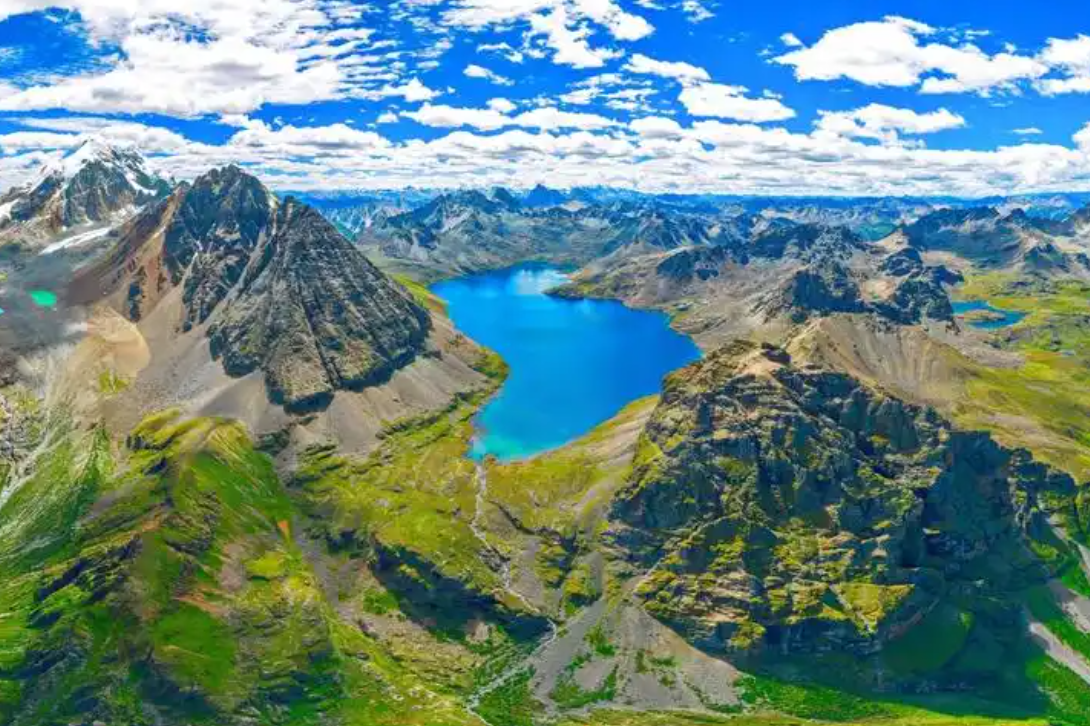
Atlantic drought will not threaten the water resources security of the Qinghai Tibet Plateau
On the southeastern edge of the Tibetan Plateau, at the convergence of the Hengduan Mountains and the Himalayas, abundant moisture creates a unique climate and ecological environment. (Zhao Wanglin/For China Daily)
Chinese scientists' recent commentary published in Nature challenged a previous study published in the same journal that suggested Atlantic meteorological droughts threaten the water resource security of the Tibetan Plateau.
The academic commentary by scientists from the Chinese Academy of Sciences published in the "Matters Arising" section of the journal on Thursday, argues that Atlantic meteorological droughts do not pose a threat to the water resource security of the Asian Water Tower.
The Tibetan Plateau provides a robust safeguard for water resource demands in the surrounding Himalayan region. Global warming is causing profound transformations on the Tibetan Plateau, with notable retreat of glaciers and alterations in permafrost conditions. Research indicates that the average annual temperature has been rising at a rate of 0.04°C per decade, leading to significant thermal degradation of permafrost across 87.98% of the region. This trend poses critical challenges to the sustainable development of the Himalayan region, as the plateau's water resources and ecosystems are at risk., said Zhao Yutong from the Institute of Tibetan Plateau Research, CAS, who is also a co-corresponding author of the article.
A A 2023 study published in Nature suggested that meteorological droughts in the North Atlantic could be linked to a significant decline in terrestrial water storage on the Tibetan Plateau between 2003 and 2016. However, this claim has been met with skepticism by other researchers, such as those from the Chinese Academy of Sciences, who argue that the causal relationship between North Atlantic droughts and water storage changes on the plateau is not well-established.

Based on this, the study further predicted that this declining trend would intensify in the future, posing severe challenges to the water resource security.
"The two key pieces of evidence supporting the aforementioned conclusions are untenable," Zhao said.
The authors of the original study used a water vapor tracking model and suggested that the North Atlantic transports substantial water vapor to the Tibetan Plateau via mid-latitude westerlies, contributing significantly to its annual precipitation.
"Observations from water vapor stable isotopes identify that the Indian Ocean monsoon is the primary source of water vapor instead of the North Atlantic, a claim that contradicts 2023 research," Zhao said.
When water vapor moves from the Atlantic Ocean to the plateau, precipitation, diffusion, and other processes occur, causing deposition along the way, potentially accounting for a significant portion of the total. Zhao pointed out that the original research had overlooked this crucial process, leading to an exaggeration of the Atlantic's contribution.
Furthermore, although the original authors claimed that a significant negative correlation was observed between North Atlantic meteorological droughts and changes in terrestrial water storage on the Tibetan Plateau from 2003 to 2016, Zhao's team found that the teleconnection between the Atlantic and the Tibetan Plateau exhibits temporal instability.
"A rolling window analysis indicated that the significant correlation between the two variables vanished from 2008 to 2021. Therefore, The conclusion that terrestrial water storage will continue to decline in the future, based solely on statistical relationships without considering physical mechanisms, is unreliable.," she said.
The commentary emphasized that traditional water vapor tracing models are inadequate for accurately capturing the complex three-dimensional water vapor transport and transformation processes over the plateau.
"To better understand the water resource security of the Asian Water Tower, it's necessary to expand the coverage of the water vapor observation network across the plateau and conduct detailed monitoring," Zhao said.
The commentary said that by tracking the complete water cycle chain — including external water vapor transport and runoff — it would be possible to accurately analyze and predict the spatiotemporal evolution of water storage on the Tibetan Plateau. (ECNS)